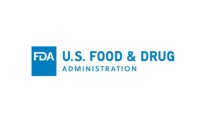2018 Predictions: Regulatory Outlook
Food Labeling and the Laws
Consumers aren't the only ones interested in non-GMO, "healthy" and clean label. Be advised that regulators are reading labels too

Just like consumers, regulators are paying greater attention to food labels.
SOURCE: ISTOCK
Marketers and product developers are challenged to understand and deliver on consumer expectations. It is hard work. And then, in come the lawyers and regulatory affairs teams. Successful food companies master the art of integrating the business and legal worlds.
An eye toward what is coming next is essential. If we start with what we know for sure will happen in 2018, this would be the last sentence of the article. Still, one can make a few educated guesses as a prelude to devising effective regulatory and business strategies 2018.
First, the big picture. At the Food and Drug Administration (FDA) food safety will remain among the highest priorities. There will be developments that impact issues of health, nutrition and related consumer benefits, but they will likely move at a slower pace. The US Department of Agriculture’s implementation of a federal uniform system for disclosing the presence of bioengineered material will get underway but likely take some time to complete. The Administration’s focus on regulatory review in the form of several Executive Orders will occupy FDA and USDA who must undertake various regulatory review and other measures. The pace of new regulations will likely slow and some rules may be rescinded.
The history of mandatory calorie menu labeling, enacted in 2010, is instructive of the uncertain regulatory environment. Days before the rules were to take effect, FDA announced a one-year delay and requested comments on how to lessen the burden on business. Some in Congress favor a new law. Absent such action, there will be menu labeling in May 2018.
Next, let’s take a quick look at a number of “hot topics” and take a few guesses on what might be coming. “Clean label” objectives can run contrary to long-standing ingredient labeling requirements that are unlikely to change. Nimble legal analysis can provide some flexibility but ultimately success will be innovation driven by companies, not regulatory changes.
Non-GMO related claims remain a risky proposition in 2018, particularly with regard to potential litigation by private plaintiffs. Your best bet? Hook-up with a third-party certification organization, an approach USDA essentially requires as a precondition for approving such claims appearing on meat and poultry product labels.
FDA likely will move forward with its plans to revamp the definition of “healthy.” In an effort to harmonize with the Dietary Guidelines, the agency will look to additional criteria—looking at the composition of fat content, restrictions related to added sugars and possibly other positive nutrients (e.g., fiber, whole grain). This could establish precedents for revising nutrient content claims largely crafted in 1993. “Healthy” developments will be important to follow and furnish input to FDA.
Class action litigation will remain a reality, with the playing field expanding to a range of unpredictable practices, including so-called non-functional slack fill (excess packaging). Managing risk is tricky but thoughtful companies will move forward with strong new product introductions and reformulations while minimizing litigation risk.
Plan ahead. Stay informed. The regulatory framework will remain dynamic in the year ahead. Regulatory compliance can be effectively managed like so many other challenges and opportunities food companies every day. There is no doubt of a light at the end of the tunnel, just make sure it isn’t an oncoming freight train.
This article was originally posted on www.preparedfoods.com.
Looking for a reprint of this article?
From high-res PDFs to custom plaques, order your copy today!





